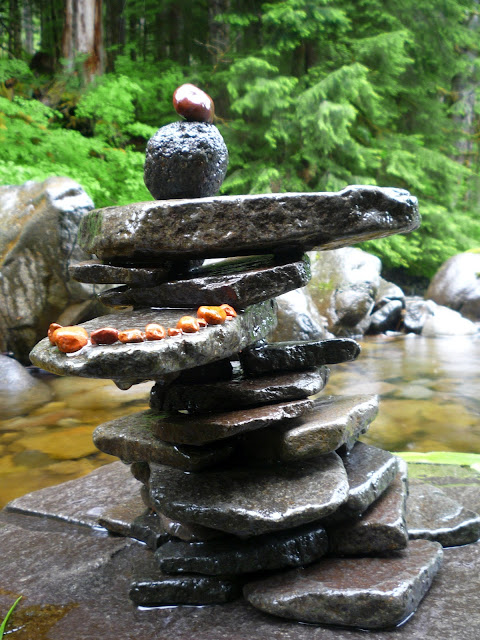Saturday, June 30, 2012
Sunday, June 24, 2012
Tidal Art as a Democratic Art Form
I normally like to allow the art to speak for itself, but as I was talking to Lia about certain aspects of the medium, she encouraged me to write it down. So here it goes.
Art can be expensive to learn. Oil painting requires paints and a prepared canvas and brushes. Photography requires a camera (and for the professionals, a number of lenses), a computer, and editing software. Bronze sculpture requires clay and plaster and bronze and a kiln. Stained class requires colored glass and leading and cutting tools. And with the exception of photography, every time you create a new piece, you use up more of your materials. Of course, I hand picked some of the more expensive art forms, but for almost any medium you work in, it costs money.
One of the beauties of tidal art is that all the materials are provided free of cost. At the ocean, the forces of the tides deposit an unending supply of interesting shells, stones, and manmade objects, shaped by the waves. In forest streams, the streambed itself is made of fascinating collections of rocks. And everywhere, the plant world constantly replenishes its offerings, which vary from day to day and season to season.
Almost anyone has access to these. Depending on where people live, their materials may change. In the desert, they may end up creating building with stones and sun-bleached dried plants. In a city, they may work with weeds growing up in cracks or falling leaves from a park. You may live in an area that seems void of interesting materials to work with, but what I've found is that the harder it is to find materials, the more you begin to look carefully at your surroundings and see the world more intimately than you had before.
Art can be expensive to learn. Oil painting requires paints and a prepared canvas and brushes. Photography requires a camera (and for the professionals, a number of lenses), a computer, and editing software. Bronze sculpture requires clay and plaster and bronze and a kiln. Stained class requires colored glass and leading and cutting tools. And with the exception of photography, every time you create a new piece, you use up more of your materials. Of course, I hand picked some of the more expensive art forms, but for almost any medium you work in, it costs money.
One of the beauties of tidal art is that all the materials are provided free of cost. At the ocean, the forces of the tides deposit an unending supply of interesting shells, stones, and manmade objects, shaped by the waves. In forest streams, the streambed itself is made of fascinating collections of rocks. And everywhere, the plant world constantly replenishes its offerings, which vary from day to day and season to season.
Almost anyone has access to these. Depending on where people live, their materials may change. In the desert, they may end up creating building with stones and sun-bleached dried plants. In a city, they may work with weeds growing up in cracks or falling leaves from a park. You may live in an area that seems void of interesting materials to work with, but what I've found is that the harder it is to find materials, the more you begin to look carefully at your surroundings and see the world more intimately than you had before.
Saturday, June 23, 2012
Thursday, June 21, 2012
Subscribe to:
Comments (Atom)


















































